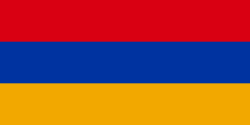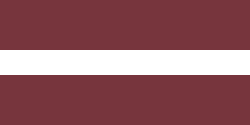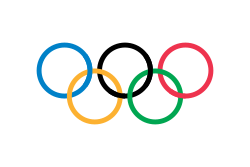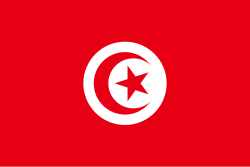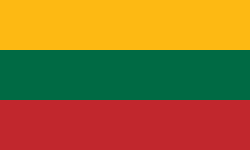Herrarnas 109 kg i tyngdlyftning vid olympiska sommarspelen 2020
| Tyngdlyftning Herrarnas 109 kg | |||
| Information | |||
|---|---|---|---|
| Datum | 3 augusti 2021 | ||
| Nationer | 14 | ||
| Deltagare | 14 | ||
| Anläggning | Tokyo International Forum | ||
| |||
| |||
| |||
| Tyngdlyftning vid olympiska sommarspelen 2020 | ||
|---|---|---|
 | ||
| Herrar | Damer | |
| 61 kg | 49 kg | |
| 67 kg | 55 kg | |
| 73 kg | 59 kg | |
| 81 kg | 64 kg | |
| 96 kg | 76 kg | |
| 109 kg | 87 kg | |
| +109 kg | +87 kg | |
Herrarnas tyngdlyftning i 109-kilosklassen vid olympiska sommarspelen 2020 hölls den 3 augusti 2021 i Tokyo International Forum i Tokyo.[1][2]
Akbar Djuraev från Uzbekistan tog guld, armeniska Simon Martirosjan tog silver och Artūrs Plēsnieks från Lettland tog brons.
Tävlingsformat
Varje tyngdlyftare får tre försök i ryck och stöt. Deras bästa resultat i de båda lyften kombineras till ett totalt resultat. Om någon tävlande misslyckas att få ett godkänt lyft, så blir de utslagna. Ifall två tyngdlyftare hamnar på samma resultat, är idrottaren med lägre kroppsvikt vinnare.[3]
Rekord
Innan tävlingens start gällde följande rekord.
| Världsrekord | Ryck | 200 kg | Tasjkent, Uzbekistan | 24 april 2021 | |
| Stöt | 241 kg | Tasjkent, Uzbekistan | 24 april 2021 | ||
| Totalt | 435 kg | Asjchabad, Turkmenistan | 19 november 2018 |
Resultat
| Placering | Idrottare | Nation | Grupp | Kroppsvikt[4] | Ryck (kg) | Stöt (kg) | Totalt[5] | ||||||
|---|---|---|---|---|---|---|---|---|---|---|---|---|---|
| 1 | 2 | 3 | Resultat | 1 | 2 | 3 | Resultat | ||||||
| Akbar Djuraev | A | 109,00 | 189 | 193 | 193 | 227 | 237 | 237 OR | 430 OR | ||||
| Simon Martirosjan | A | 108,90 | 190 | 195 | 195 OR | 228 | 228 | 423 | |||||
| Artūrs Plēsnieks | A | 108,85 | 175 | 180 | 180 | 220 | 225 | 230 | 230 | 410 | |||
| 4 | Timur Naniev | A | 108,95 | 180 | 185 | 188 | 188 | 221 | 221 | 409 | |||
| 5 | Hristo Hristov | A | 108,90 | 185 | 189 | 189 | 213 | 219 | 219 | 408 | |||
| 6 | Jin Yun-seong | A | 107,30 | 180 | 180 | 220 | 220 | 400 | |||||
| 7 | Arkadiusz Michalski | A | 108,60 | 175 | 175 | 216 | — | — | 216 | 391 | |||
| 8 | Wesley Kitts | A | 108,35 | 173 | 177 | 177 | 213 | 213 | 390 | ||||
| 9 | Aymen Bacha | B | 108,10 | 172 | 177 | 177 | 203 | 211 | 211 | 388 | |||
| 10 | Öwez Öwezow | B | 108,80 | 165 | 171 | 171 | 200 | 200 | 371 | ||||
| 11 | Arnas Šidiškis | B | 105,35 | 151 | 156 | 156 | 182 | 187 | 187 | 343 | |||
| 12 | Matthew Lydement | B | 108,35 | 152 | 158 | 158 | 180 | 180 | 338 | ||||
| 13 | Tanumafili Jungblut | B | 108,90 | 140 | 150 | 150 | 180 | 180 | 330 | ||||
| — | Ali Hashemi | A | 108,80 | 177 | 181 | 184 | 184 | — | — | ||||
Referenser
- ^ ”Weightlifting Competition Schedule”. Tokyo 2020. Arkiverad från originalet den 12 mars 2020. https://web.archive.org/web/20200312123054/https://tokyo2020.org/en/schedule/weightlifting-schedule. Läst 17 april 2022.
- ^ ”Schedule - Weightlifting Tokyo 2020 Olympics”. Olympian Database. http://www.olympiandatabase.com/index.php?id=245406&L=1. Läst 17 april 2022.
- ^ IWF Technical Rules. Arkiverad 29 december 2009 hämtat från the Wayback Machine. International Weightlifting Federation. Läst 7 augusti 2016.
- ^ ”Weightlifting | Men's 109kg | Group A Competition Sheet”. TOCOG. 3 augusti 2021. Arkiverad från originalet den 4 augusti 2021. https://web.archive.org/web/20210804085828/https://olympics.com/tokyo-2020/olympic-games/resOG2020-/pdf/OG2020-/WLF/OG2020-_WLF_C56B_WLFM109KG-------------FNL-A00100--.pdf. Läst 17 april 2022.
- ^ ”Weightlifting | Men's 109kg | Results”. TOCOG. 3 augusti 2021. Arkiverad från originalet den 3 augusti 2021. https://web.archive.org/web/20210803134042/https://olympics.com/tokyo-2020/olympic-games/resOG2020-/pdf/OG2020-/WLF/OG2020-_WLF_C73_WLFM109KG-------------FNL---------.pdf. Läst 17 april 2022.
| ||||||||
| ||||||||||||||||
Media som används på denna webbplats
Pictograms of Olympic sports - Weightlifting. This is unofficial sample picture. Images of official Olympic pictograms for 1948 Summer Olympics and all Summer Olympics since 1964 can be found in corresponding Official Reports.
An icon that represents a gold medal
An icon that represents a silver medal
An icon that represents a bronze medal
Black&white version of Image:Olympic Rings.svg to use in lists where the colored version is too eye-catching
Olympic Movement flag
Proportions 2:3, created 1913, adopted 1914, first used 1920.
- Colors as per http://fairspielen.de/wp-content/uploads/2015/09/Annexe-3-Olympism_and_the_Olympic_Symbol_-_Principles_and_Usages_Guide-1.pdf
- blue: PMS 3005C
- yellow: PMS 137C
- black: PMS 426C
- green: PMS 355C
- red: PMS 192C
- Dimensions of the rings taken from http://fairspielen.de/wp-content/uploads/2015/09/Annexe-3-Olympism_and_the_Olympic_Symbol_-_Principles_and_Usages_Guide-1.pdf
Flag of Iran. The tricolor flag was introduced in 1906, but after the Islamic Revolution of 1979 the Arabic words 'Allahu akbar' ('God is great'), written in the Kufic script of the Qur'an and repeated 22 times, were added to the red and green strips where they border the white central strip and in the middle is the emblem of Iran (which is a stylized Persian alphabet of the Arabic word Allah ("God")).
The official ISIRI standard (translation at FotW) gives two slightly different methods of construction for the flag: a compass-and-straightedge construction used for File:Flag of Iran (official).svg, and a "simplified" construction sheet with rational numbers used for this file.
Författare/Upphovsman: F l a n k e r, Licens: CC BY-SA 2.5
Flag of the Kingdom of Sardinia (1851-1861) and of the Kingdom of Italy (1861-1946). Use: Civil flag and ensign. In a governmental or a military context, the crowned version (see Crowned version) was always used (as State flag and naval ensign).
Flag of Germany with a 3:2 ratio, instead of 3:5. The 3:2 version was used by the German Confederation and the Weimar Republic. See Flags of the World for more information.
Flag of Germany with a 3:2 ratio, instead of 3:5. The 3:2 version was used by the German Confederation and the Weimar Republic. See Flags of the World for more information.
US Flag with 48 stars. In use for 47 years from July 4, 1912, to July 3, 1959.
(c) I, Cmapm, CC BY-SA 3.0
The flag of the Soviet Union (1955-1991) using a darker shade of red.
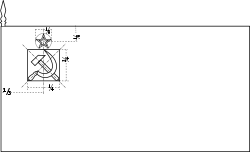
(c) I, Cmapm, CC BY-SA 3.0
The flag of the Soviet Union (1955-1991) using a darker shade of red.

Flag of Belarus 1995-2012


